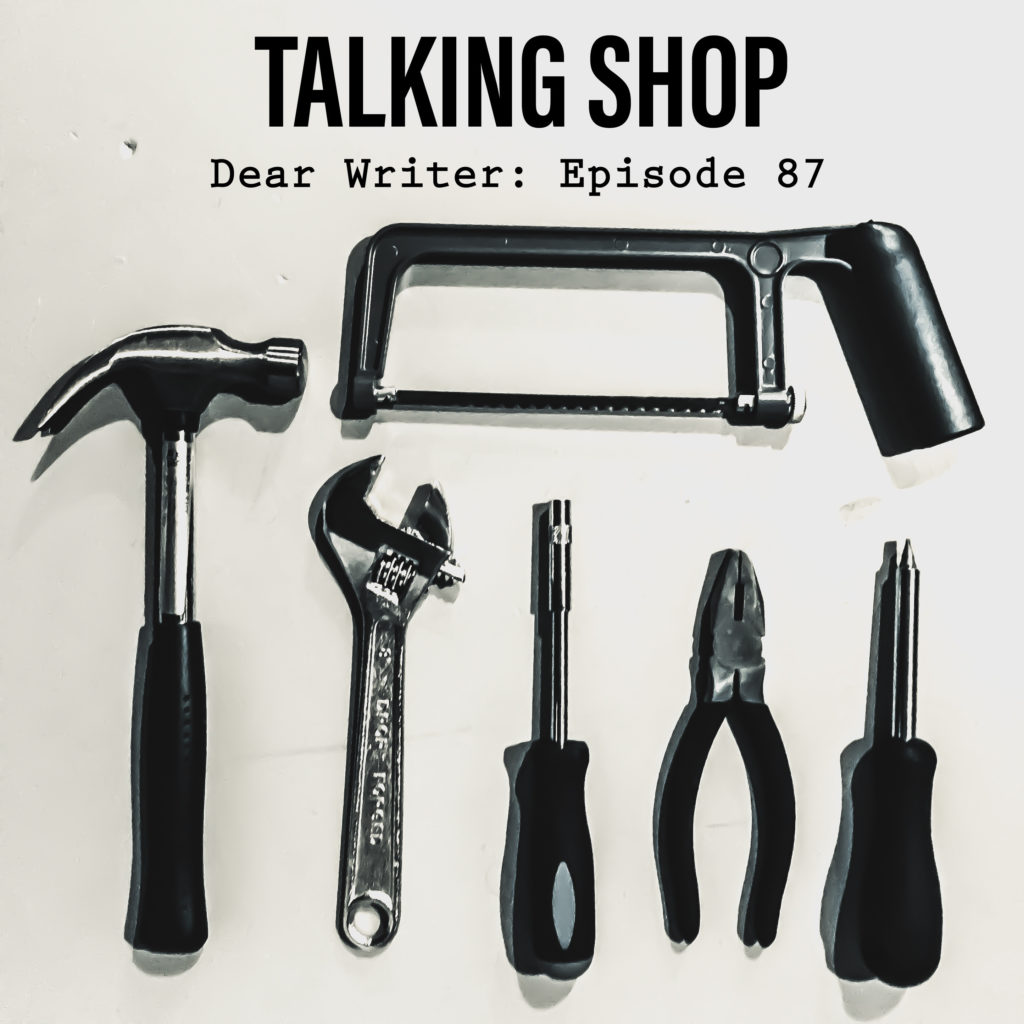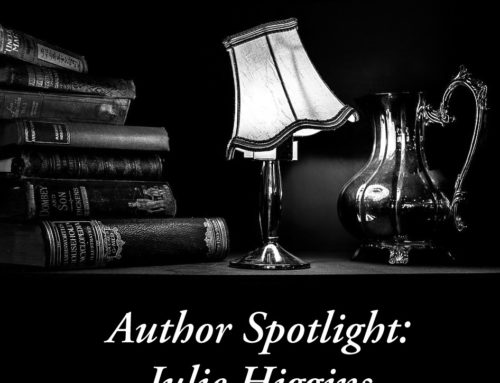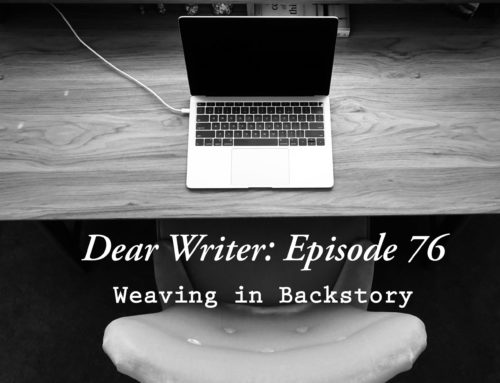Talking Shop
In this month’s Talking Shop episode, Sarah reviewed the second chapter of The Emotional Craft of Fiction by Donald Maas which explained the nuances of showing vs telling. Ashley reviewed chapter two of a book called The Writing Experiment – Strategies for Innovative Creative Writing By Hazel Smith which demonstrated a writing technique based on experimenting with different genres.

Episode Summary:
Sarah’s Tool of the Month:
The Emotional Craft of Fiction: How to Write the Story Beneath the Surface by Donald Maas
“While writers might disagree over showing versus telling or plotting versus pantsing, none would argue this: If you want to write strong fiction, you must make your readers feel. The reader’s experience must be an emotional journey of its own, one as involving as your characters’ struggles, discoveries, and triumphs are for you.”
I read this book some time ago and am now going over it again, because I feel it has some really great writing tips in it. The chapters cover:
- The Emotional Craft of Fiction
- Inner versus Outer
- The Emotional World
- Emotions, Meaning and Arc
- The Emotional Plot
- The Reader’s Emotional Journey
- The Writer’s Emotional Journey
I’m currently in the midst of chapter four, and went ahead and made the purchase this time since it’s such a useful book (last time I loaned it from the library). It’s been a while since I last read it, and since we read so many books on writing craft I find it hard to speak to the latter chapters without having perused through them recently, but I can attest that the first few chapters have been wonderfully helpful, and very interesting since I have grown a lot as a writer from when I initially read this book. I decided to focus on talking about the second chapter for this review. The second chapter speaks about showing versus telling, or, outer (showing) versus the inner (the character’s inner thoughts) of telling. What I find interesting about this chapter is that it doesn’t immediately condemn ‘telling’ your reader information from the character’s perspective, but instead focusses on where and when it’s appropriate to use each mechanism.
“A dichotomy less often discussed is the division between those who are comfortable writing emotions and those who find putting emotions on the page repellent. The latter group values showing. To get a reader to feel what a character feels, the thinking goes, put the reader through the character’s experiences.” […] “For other writers, telling is a positive. They go inside the mind and heart of a character to observe and feel story events just as that character does.”
“Showing and telling are fine as far as they go, but the emotional experience of readers has little to do with that. The most useful question is not, how can I get across what the characters are going through? The better question is how can I get readers to go on emotional journeys of their own?”
Through the chapter, Maas explores the outer mode of showing, the inner mode of telling, and a third option, the ‘other mode’ (which causes readers to feel something that the story’s characters do not themselves feel). When viewed together, and when used properly, all three methods contribute to giving the reader an emotional experience that not only keeps them engaged in the story, but helps them to remember the story.
We’ve definitely used all three methods in our books, but what I found most interesting in the chapter was his description and tips around ‘telling’. He made the point that straight telling, such as ‘I felt angry’ basically NEVER stirs readers to feel the emotion stated on the page. They haven’t been pulled in with why the character feels this way, and it’s too plain and simple—people rarely state (or know) exactly what they feel. Feelings are confusing, and the mix of feelings can hide under the surface. So, what does he mean by telling then? Telling, (by his definition) is the act of using the characters thoughts to get across their feelings, and is most effective when it is surprising. For example, a character might relay annoyance at their friend or be unhappy at their friend for getting a promotion at work. This isn’t the reaction you’d expect and a deeper emotion is at play. Perhaps the deeper emotion is jealousy: the character wanted that promotion themselves. Or, perhaps it’s sadness and loss: their friend is moving away for this new opportunity. So while the character is admitting they feel annoyed and hurt, we as readers recognise there is more to it than just that one emotion.
When it comes to showing, he suggested using showing in cases where connecting with the character might be a painful experience that the reader would rather forgo. I’m not sure I 100% agree with this, as I think readers do use writing to safely explore experiences they can’t in real life, but I do agree that there are characters who you can better connect with when hiding their true motives, as sometimes their true thoughts can create a disconnect between the reader and the character. Maas also made the point a lot of showing relies on subtext. We see a character doing something, or see how they are acting in any given situation, and when this is done effectively the reader can sense the underlying emotion the character is feeling.
Other mode: Maas didn’t go deeply into the methods of ‘other mode’ in this chapter, as you can imagine creating feelings other than what your character feels is highly nuanced and he explains these methods in greater detail in other chapters throughout the book. But he did describe what readers are looking for. While you can’t control what a reader feels, you can control whether they feel something and how strong those feelings will be. Readers are seeking an experience, and they expect their experience to be a positive one: enjoyment, suspense, amusement. Writers want to challenge readers, and readers want to be challenged. Readers compare and relate to characters and situations in books. They come to books not seeking to learn about your characters, but rather seeking to learn something about themselves and we as writers need to remember this!
Ashley’s Tool of the Month:
The Writing Experiment – Strategies for Innovative Creative Writing by Hazel Smith
“The Writing Experiment demystifies the process of creative writing, showing that successful work does not arise from talent or inspiration alone. Hazel Smith breaks down writing into incremental stages, revealing processes that are often unconscious or unacknowledged, and shows how they can become part of a systematic writing strategy.
The book encourages writers to take an explorative and experimental approach to their work. It relates practical strategies for writing to major twentieth century literary and cultural movements, including postmodernism.
Suitable for both beginners and experienced writers, The Writing Experiment covers many genres including fiction, poetry, writing for performance and new media. Each chapter is illustrated with extensive examples of both student work and published writing, and challenging exercises offer writers at all levels opportunities to develop their skills.”
Chapter Titles are really interesting:
Part one: introductory strategies
Chapter 1: Playing with language, running with referents
Chapter 2: Genre as a movable feast
Chapter 4: Writing as recycling
Part two: Advanced Strategies
Chapter 10: Tongues, talk and technologies
Chapter 12: Mapping worlds, moving cities
I thought I would cover one chapter from the introductory strategies this time, and an advanced technique in the next talking shop episode.
Chapter 2: Genre as a movable feast
Genre: is of French origin and is basically a way to categorise different types of writing. Different genres in writing have different characteristics and conventions. Genre can apply to specific types of writing (murder mystery, sci-fi, YA) or different modes of writing within a specific genre – realism, satire (using exaggeration, irony, or other devices to poke fun at something), surrealism (the world is designed to seem bizarre and illogical – think about your weirdest dreams where the sky is green or instead of hands you have sausages or something). The author uses this chapter to show that you can write a short passage of realist prose and then revamp it using surrealist and satirical modes.
Writing in realism: This is likely the mode most writers are familiar with, and is the dominant mode of fictional writing at present, usually because it mirrors our world. The author suggests writing a passage of prose about a person-in-action, starting with a skeleton passage before filling it out with more detail. Keep an eye on the visual aspects of the scene – imagine you are a filmmaker (can you visualise your writing?), don’t forget the five senses. Create a sense of movement through strong verbs. Include detail to help set the mood.
“She circles in front of the fridge and then opens the door. Inside are rows of plain and fruit-flavoured yoghurt, egg sandwiches and cartons of milk. She slams the fridge door abruptly. She edges away, then turns back and opens it cautiously again. She glances from side to side. She slides out a yoghurt, peels off the lid, and quickly swallows a spoonful.”
Surrealism: surrealism defamiliarizes the reader from the world and makes you see the world for the first time. The surrealist text creates a physically impossible situation that doesn’t exist in reality.
“As she looked vacantly at the fridge door it burst open. A dark brown chocolate cake bounced on the floor and proceeded to shuffle across it. It was followed by a large unopened carton of cream. The cake waited in the middle of the room for the cream carton, then they simultaneously leapt onto the table.”
Author creates the surrealism by giving the objects in the scene impossible actions and a will of their own
Satire: in this type of writing the author is trying to make a comment about society. It is characterised by exaggeration, incongruity and deflation. In this passage the author tries to paint the portrait of a “person caught between two contemporary religions: beauty and food.”
“She was worshipping in the mirror, when the worm inside her stirred. She hobbled from the bedroom on her high-rise backless heels. A higher power was directing her. Her nostrils started to dilate before she opened the door.The high crept up on her: it was a Yoplait just like the one in the ads. She intoned the jingle like a mantra. Then she seized the door, grabbed the Yoplait, and with a mixture of guilt and pleasure voraciously licked the lid.”





















Leave A Comment